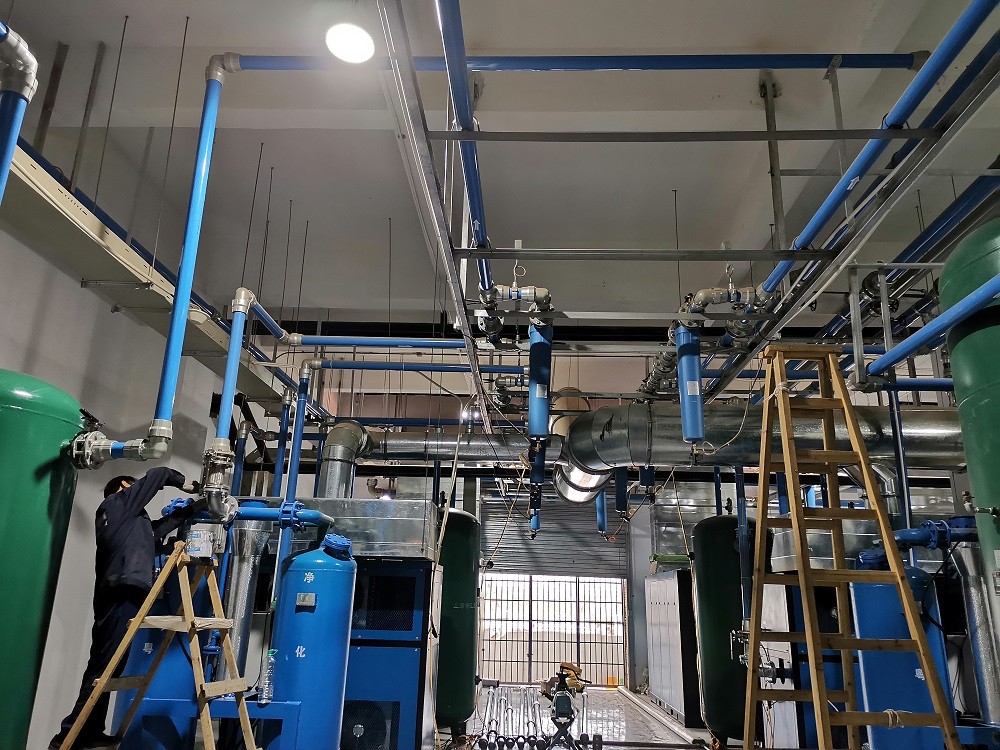-
You are here:
- Home
- > News
- > Industry Information
Preparation and precautions before air compressor pipe laying
1. Air compressor pipe preparation before laying
1) According to the terrain of the site, the distance of the gas transmission and the distribution of the pneumatic tools, draw the layout of the pipeline.
2) Develop a material plan according to the pipeline layout plan and prepare the tools for connecting the pipeline.
3) According to the layout of the pipeline, mark the markings or pegs with white ash.
2. Precautions in air compressor pipe laying
1) Pipe fittings in the pipeline should be carefully inspected before installation and can only be used if they meet the standards.
2) After the on-site cutting, the air compressor must be cleaned in the pipeline, and no metal slag, residue and other dirt are allowed.
3) For valve parts with directional requirements, when installing, it should be noted that the direction should be consistent with the flow direction of compressed air.
4) At the pipe flange connection, the inner diameter of the sealing gasket should not be smaller than the inner diameter of the pipe mouth, so as not to increase the resistance inside the pipe, the joint should be tight to prevent air leakage.
5) Pipe laying should be firm and straight, avoid exposure in summer, and keep warm in winter.
6) After the air compressor pipe is laid, apply compressed air to clean the pipeline, and check whether there is any air leakage at each joint. If it does not meet the requirements, it should be treated in time.
7) When the pipe is horizontally laid in the horizontal tunnel, the air compressor pipe with a diameter greater than 50mm shall be fixed on the cross arm, and the pipe with a diameter below 50mm shall be hung on the frame with a hoop. The distance between the support points of the pipe shall be in accordance with Table 1 so that the deflection of the pipe does not exceed 5 mm; otherwise, the deflection is too large to cause water accumulation.
8) Pipes outside the tunnel shall be laid or buried underground if passing through the roadway. The height of the overhead should ensure that the vehicle can pass, and the inspection well should be left at the pipe joint buried in the ground. In winter construction, in order to prevent freezing and to avoid the influence of low temperature on air pressure (heat loss), wrap the pipe with insulation material (straw, burlap, etc.), or lay it in the trench of 1~1.5m, and check it at the joint well.
9) In the inclined tunnel, the pipe application snap ring is fixed on the tunnel bracket. The distance between the support points should be shorter than when the horizontal is laid.
10) In the vertical tunnel, the air compressor pipe can be fixed on the ledge along the pit wall and reinforced with gussets. The distance between the support points must not exceed 3m

